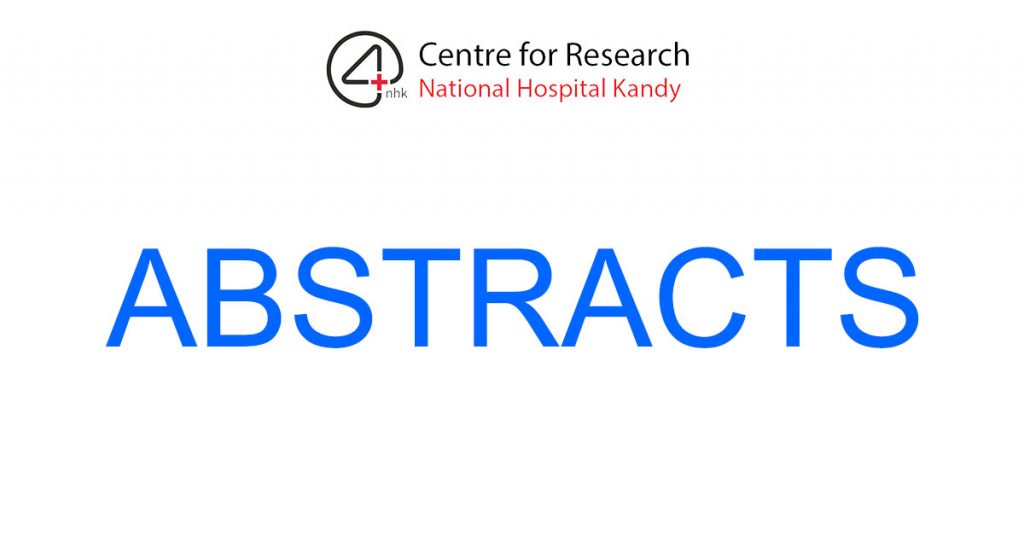NADUNI ERANDIKA1, NISHANTHA NANAYAKKARA1, LALANI YATAWARA2
1National Hospital-Kandy, Sri Lanka
2Faculty of Allied Health Sciences, University of Peradeniya, Kandy, Sri Lanka
Background: Malnutrition is very common among haemodialysis (HD) patients.
Aim: We aimed to assess the macronutrient and micronutrient intake and determined the association between nutritional intake and socio-economic status among HD patients.
Methods: This is a descriptive cross-sectional study which is conducted among 305 HD patients at National Hospital, Kandy, Sri Lanka. Interviewer administered, semi-structured questionnaire was used to collect data from the patients. Nutritional data was collected using 24-hour dietary recall method. Statistical analysis was performed via SPSS version 20. Ethical approval was obtained from Ethics Review Committee, Faculty of Allied Health Sciences, University of Peradeniya.
Results: The mean age of the study participants was 50.45 13.063 years and majority were males (69.2%; n=211). Only 1.6% (n=5) of the patient fulfilled the recommended calorie intake per day (>30 Kcal/day). Majority of the patients had more than 60% of the calorie intake from carbohydrates (n=232; 76.1%). Overall, energy, protein and fat intakes in 98.4%, 96.1% and 91.8% of the participants were less than the recommended values. All the micronutrient intake amounts were in less than the recommended level. Significant differences found between micronutrients based on the monthly income. Such as, dietary PUFA (p=0.021), cholesterol (p=0.002), vitamin E (p=0.018), vitamin B2 (p=0.000), vitamin B6 (P=0.008), folic acid (p=0.004), sodium (p=0.000), potassium (p=0.010), calcium (p=0.001), magnesium (p=0.038), phosphorus (p=0.000), iron (p=0.042) and zinc (p=0.003).
Conclusions: There is a wide gap between recommended nutrient intake and the actual nutrient intake of this study patients. Nutritional status and other clinical measures were influenced by patients’ age and monthly income. Regular optimal nutritional counselling and monitoring is very important to improve their outcomes. Introduction of socio-economical dietary guidelines can be warranted.

